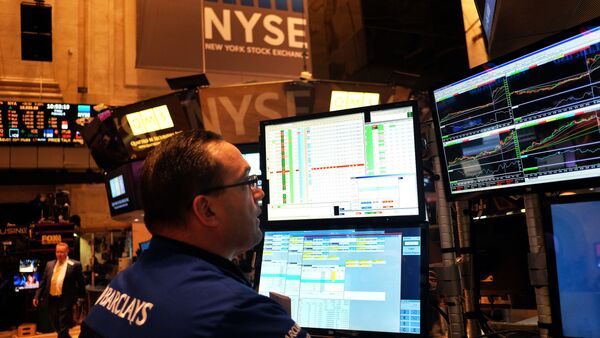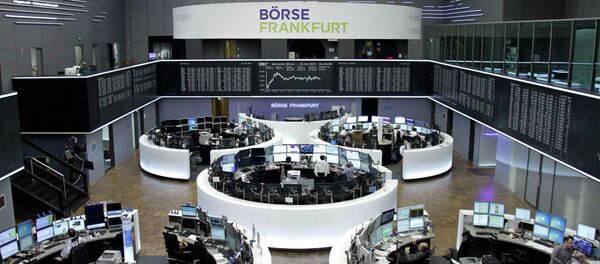Kristian Rouz — Against the background of the US Federal Reserve's two-day meeting, and with the arrival of the somewhat disappointing Q1 data, Wall Street posted moderate gains in two out of the three major indices on Tuesday. While the Fed has explicitly ruled out a hike in its base interest rate this time, the long-promised second wave of monetary tightening could still happen in June, however, the data suggests September as a more likely time frame. US economic expansion slowed significantly in Q1, mainly due to harsh weather conditions, meaning major decisions on economic policy are unlikely to happen until after the next three months when Q2 data arrives to clear up the picture.
The Dow rose 0.4%, closing in the green, while the S&P 500 added 0.28%. The Nasdaq Composite, however, slid 0.1% after Apple Inc. depreciated slightly, weighing on the whole index.
The Fed policy meeting is underway, set to conclude later on Wednesday. So far, the regulator said, no further tightening is happening this time after Q1's soft data arrived, but a possible June rate hike is not off the table yet. The Fed revealed nothing new as the bank only reconfirmed once again its commitment to adjust their policies based on data, and decisions will be made meeting-by-meeting, no grandioso planning has been revealed so far.
This means that some uncertainty still lingers in the air, and Wall Street is cautious, turning their eyes to the Q1 data which arrived today. The numbers beat expectations, as poor international conditions were supposed to hit the economy harder. The US economy expanded by 1% year-on-year in Q1, after adding some 2.2% in Q4, which is a disappointment. Nonetheless, in Q1 2014 the economy contracted significantly due to the weather as well, meaning this year's number are better.
US consumption, construction and the West Coast port disruptions all declined, while business investment also suffered due to lower energy prices. The dollar strengthened by 4.5% against its major peers in Q1, hitting the overseas operations of the US-based enterprises, also negatively affecting international trade.
US government bond yields rose to 1.99% from 1.92% as investors were selling Treasuries, increasing the risk on Wall Street. That said, the final readings of the US housing market, set to arrive at noon on Wednesday, might trigger a rally in US stocks if optimistic expectations are confirmed.


